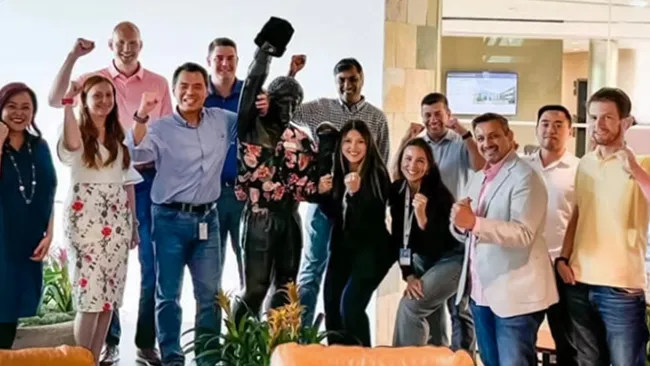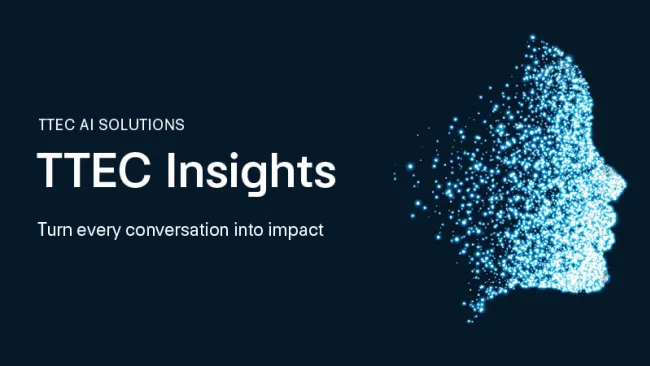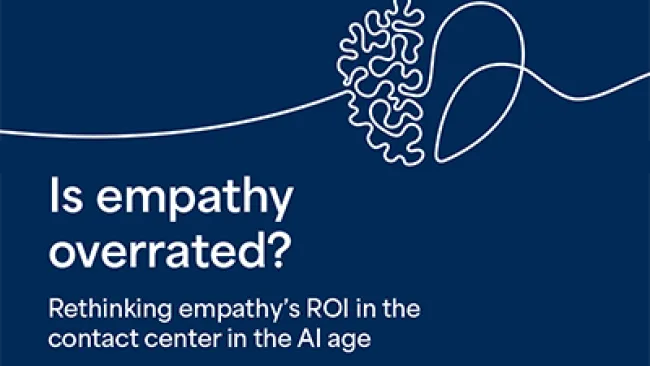"Profits, revenue and data are excellent indicators of a company’s growth, but they’re not effective in communicating the emotional value and impact the employees have on the company." – Shep Hyken
That quote rings true to me through and through. When I kicked off my career almost 20 years ago now (yikes!) I had a burning passion to train and teach. I wanted to be able to provide mentorship and guidance that could be applied in the real world to drive improved outcomes for my trainees and in turn their customers. My first management role was as a corporate trainer, teaching new hires on systems and tools, soft skills, process, procedures, etc. I had 2 weeks of in-classroom time to prepare them before they started interacting with customers. At my disposal was a projector with very limited slideware and roughly 300 pages of written curriculum.
I followed the same delivery of material that the training supervisor instructed and my first class hit the floor two weeks later. Within those two weeks, my first class’ attrition rate was roughly 30%, followed by an additional 20% within the next 8 weeks. However, since those numbers were the "norm" I was hailed as a successful new trainer. I had 2 weeks before my next new hire class and decided I needed to provide a better experience to my trainees to ensure they felt they were set up to be successful.
I took the existing material and created more visuals, focused on situational role plays that involved a hands-on experience and allowed my entire class to observe me interacting with real customers live. Needless to say, my second class had a 95% graduation rate that further carried out to less than 10% attrition after 6 weeks. The best part was seeing a handful of my trainees promoted into management roles a couple years later. The feedback I got from my second class and future classes all revolved around the experience they had while in my classroom. I was determined to cultivate an inviting and collaborative culture that would provide a better experience for them. In turn they were much better prepared to serve our customers and the results showed.
Here we are, 20 years later. I still firmly believe employee experience (EX) is one of if not the most critical foundational elements of success. It may seem like a daunting task to create an EX plan, much less execute on it, but it all starts with identifying strong attributes that promote a healthy EX. And I don’t mean solely relying on employee "engagement" such as surveys or throwing a foosball table in the common/cafeteria area. So, what does a successful EX strategy look like and contain? Glad you asked :)
1. Purpose, backed by the C-suite
Consumers are driven by emotions and successful companies understand that they have a role in not just delivering a great product or service, but also a great emotional experience. Connect the two and you have a clear vision that is backed by actions of senior leaders. Let your employees know how you want your customers to feel and engage with your brand. Give your employees a clear plan and a purpose-driven mission that they feel they can contribute towards—no matter their role in the organization—and you’ll have the foundation for a solid EX strategy.
2. Technology and talent, in concert
In my intro I described the circumstances of my challenges 20 years ago. The sad thing is, there hasn’t been much change when it comes to technology supporting employees internally. We might have moved from paper binders to Power Point and away from tape recorders to MP3 files, but that's simply changing out the mediums, not driving any differentiation to the outcomes.
Simply put, it's adoption by necessity, not from proactiveness. We've reached a critical milestone where a greater percentage of the workforce has a "digital" aptitude. Yet, for a plethora of reasons (mostly excuses) we have not changed core back and/or front-end systems. Have you ever seen the face of a millennial when they see a DOS-based "green screen" interface? It's pretty funny and sad at the same time. If you think about your employees’ personal lives or even your own, think about how mobile phones have matured to smartphones over the past 10 years and how you interact with them. You use your finger to touch an app, open it, and scroll with your thumb. Simple.
There's an endless amount of software makers and amplifiers out there that can transition you to modernized systems that are faster, cost less, and will make you and your company more productive. You have to start small with a very tactical plan that can be executed, but when you introduce the technology and pair it with your talent, it produces a beautiful melody. Your employees can focus more on the customers and have meaningful connections without having to worry about slow systems, not knowing how to navigate a disorganized knowledge base while trying to help a customer and pass a QA at the same time. Employees will feel much more true job satisfaction and it will show in measurable KPIs.
3. True employee recognition, development, and engagement
Most companies have a pretty standard interview and onboarding process. New employees are trained and then proceed to their core jobs where they likely have a mid-year review and end-of-year review. There may be some informal discussions and a lunch party or two, but that's become the norm. Right now, there is very much a talent war going on and employees have several options, which has been the reverse case for many years. Employees are looking for more than just a job. They're looking for somewhere they can perform meaningful work, feel supported, appreciated, and wanted.
The good news is the same tools companies tend to focus on for customers can easily be leveraged internally for their own employees. In fact, I typically recommend trying out new tools with employees first, before going to customers. Give them an opportunity to try something new and be a part of shaping it and fine-tuning it. This can go a long way in increasing employee engagement and retention.
For example, think about the buzziest of buzz words these days, "chatbots." Most companies buy out-of-the-box chatbots, throw them on their websites and apps and think, “that's it, customers will love them and we'll save money by having fewer contacts coming into the contact center.”
Well, many quickly learn that it's much more complicated than that. You have to train the bot, just like you would a human. You have to tune it, connect it to the right knowledge bases, get the utterances right, connect it to the CRM, connect it with automation tools where you need to ensure the business rules are correct, etc. In short, it's a lot of work. But what if you used that chatbot to help your own agents first? It could help process long mundane processes or calculations, fetch data and populate CRM records, grab KB articles, etc. The agents could then help rate the accuracy of the articles retrieved, perform form audits to ensure the bots are filling in the CRM fields correctly and so much more.
Now you've put your agents in a position to help the overall company strategy and they get to be "bot tuners." Speaking of technology and talent, at TTEC, we use our own internal intelligent virtual assistant (IVA) called Louie. Louie's interactions begin right when an applicant is filling out an application with us via SMS or from the website. He guides them through the process to ensure it’s completed fully and accurately and even schedules an interview. He then can review the inputs and prioritize which candidates would make a good fit for the various roles we have open. This helps our own recruiting team spend more face time (or Zoom time) with candidates that are the best fit for TTEC.
Since using Louie in this manner, 92% of candidates have said that Louie made them even more excited for their career to begin at TTEC. But we certainly do not stop there! Louie continues to communicate with agents, reminding them of training times, locations, congratulating them on milestones such as training graduation, first 30/60/90 day anniversaries, job alerts that they tagged as being interested in, and so much more. Louie also helps our management staff by sending reminders to team leads on who needs coaching or training, helping with automation break and lunch scheduling to staffing gaps and QA automated scoring forms.
The chatbot example may seem like it blends into my previous two points and you're spot on, it does! It gives employees a purpose, leverages modern technology, and provides tangible results. This is just one way to build a strong meaningful EX strategy that is part of your organizational DNA. The important thing is to get started. Use these tips as a starting point for building a progressive and ever-evolving EX strategy that propels your business to new heights.















